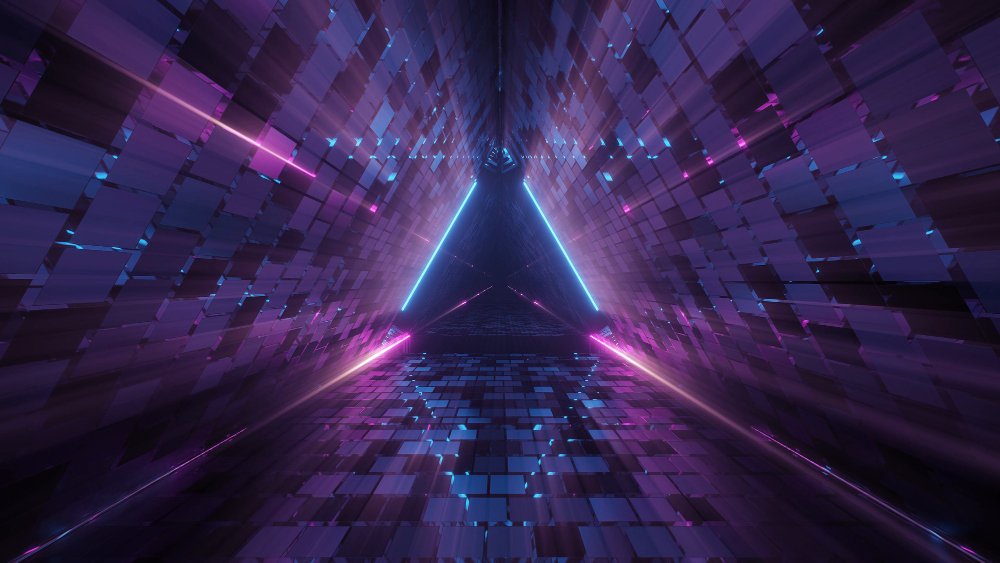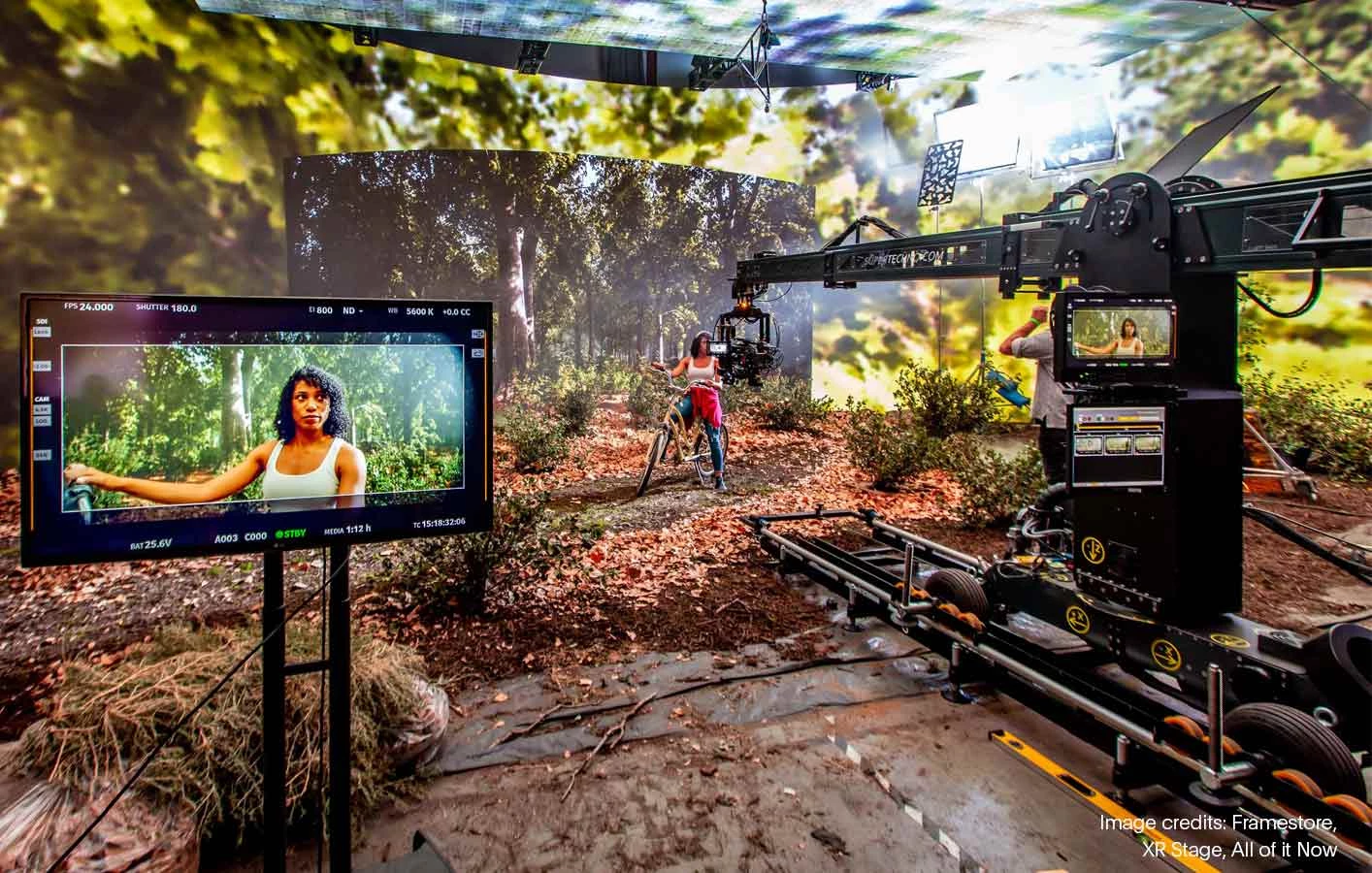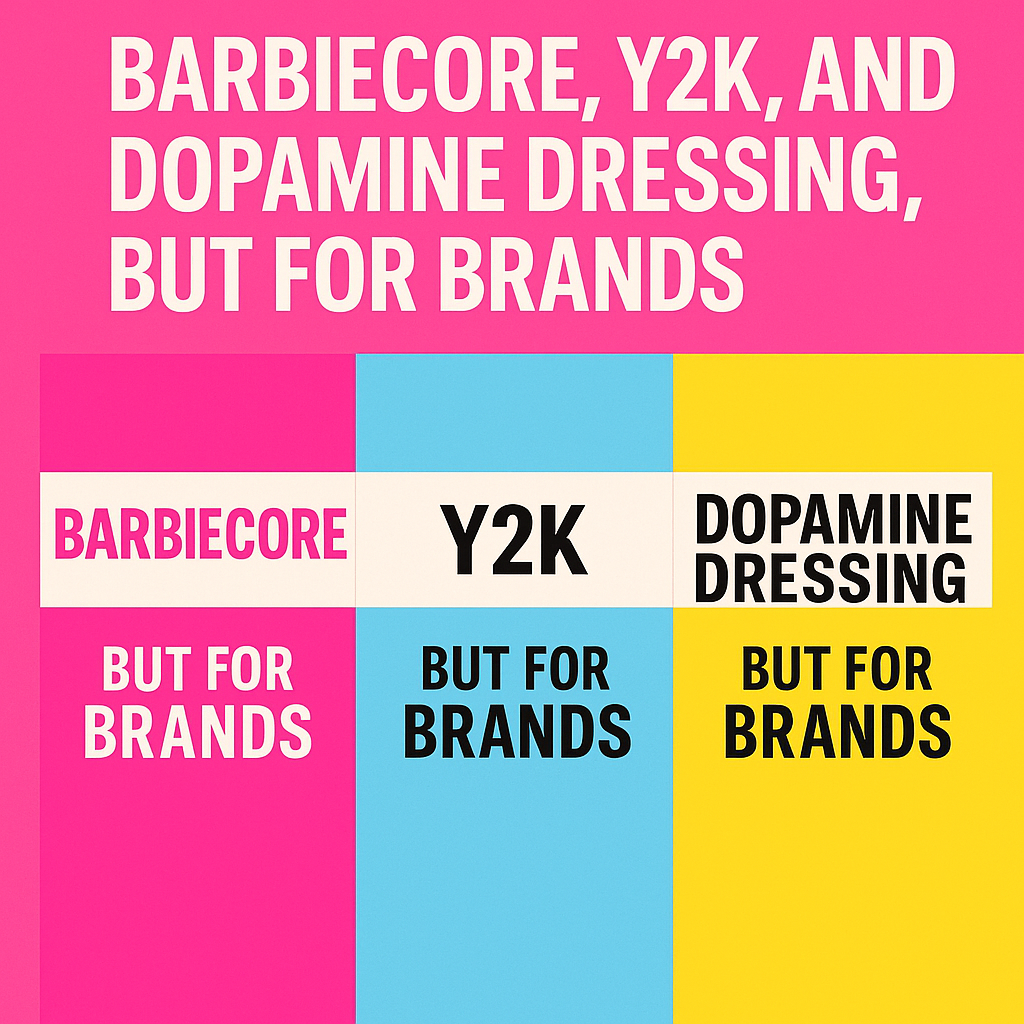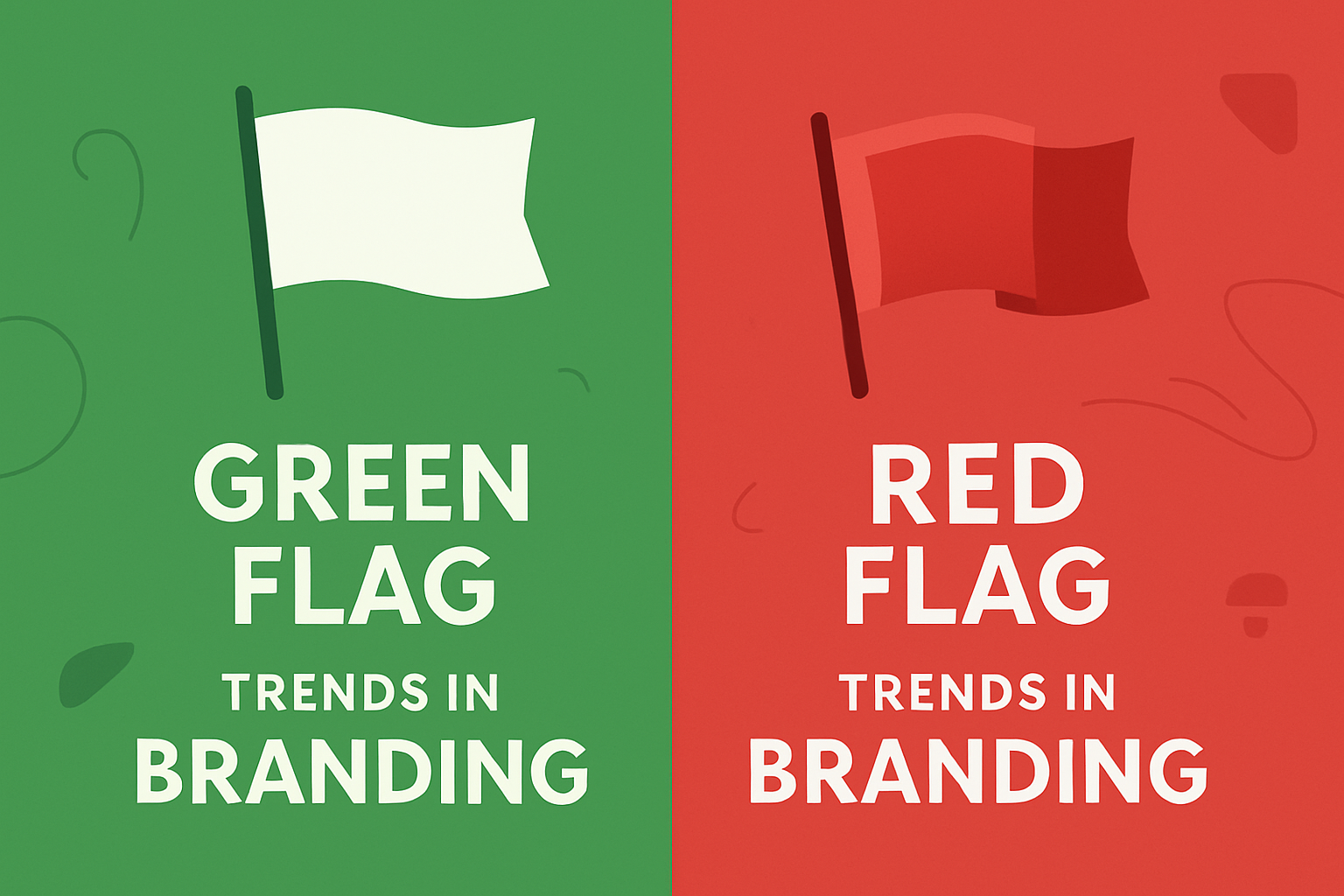The film and entertainment industry is undergoing a technological revolution with the rise of virtual production and LED volume stages. By 2030, these technologies are projected to dominate the industry, driving creativity, efficiency, and innovation across media production. Virtual production blends traditional filmmaking techniques with real-time digital content, while LED volume stages are massive LED walls that display dynamic backgrounds and environments. Together, they enable filmmakers to create realistic, immersive scenes without leaving the studio.
This article delves into the industry impact of virtual production and LED volume stages, exploring their benefits, and detailing three success stories that highlight how these technologies are reshaping the entertainment landscape.
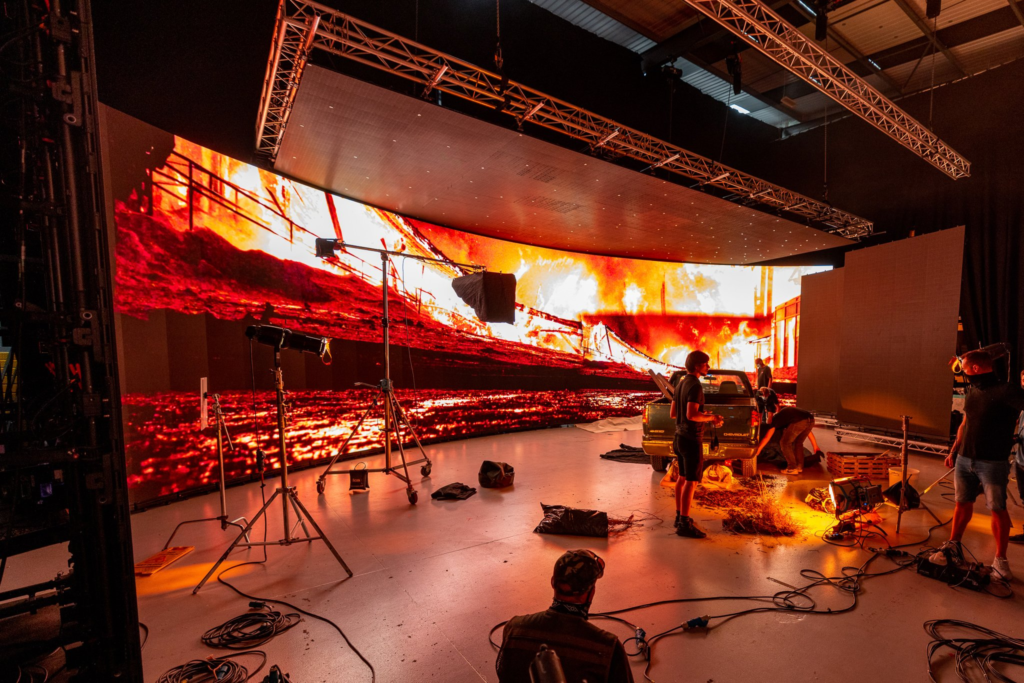
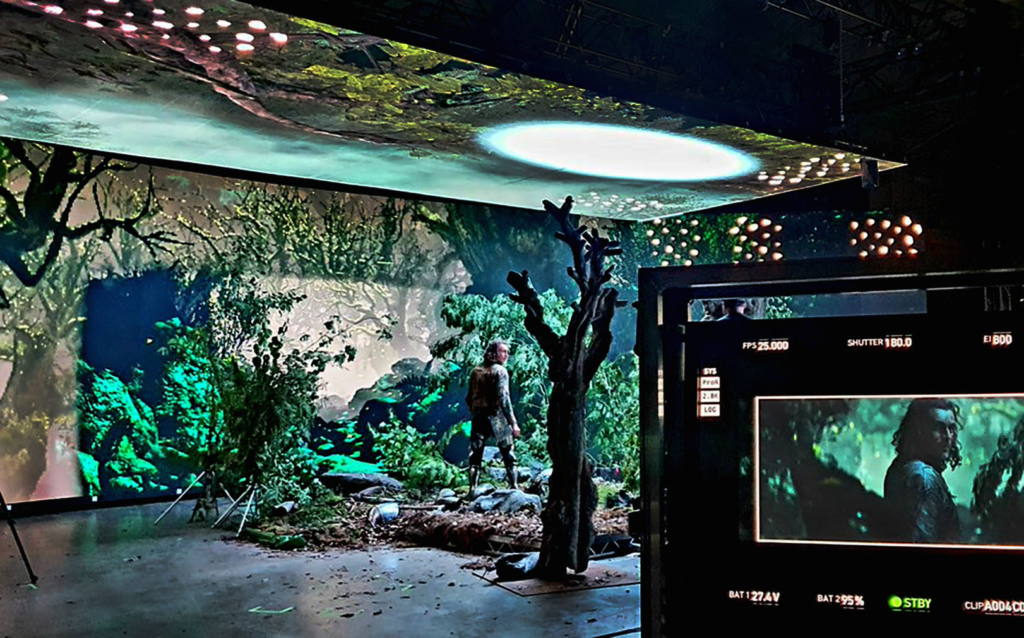
Table of Contents
Industry Impact of Virtual Production and LED Volume Stages
Virtual production and LED volume stages are poised to have a lasting impact on how films, television shows, and commercials are produced. As the technology matures, it offers significant advantages over traditional production methods.
Real-Time Collaboration and Faster Production
One of the biggest impacts of virtual production is the ability to streamline the production process. Instead of relying on post-production visual effects (VFX), virtual production brings real-time VFX into the filming stage. This allows directors, actors, and cinematographers to interact with digital environments, enhancing creativity and improving decision-making on the spot. Since LED volumes can render high-quality scenes in real-time, it minimizes costly reshoots and enables faster content creation.
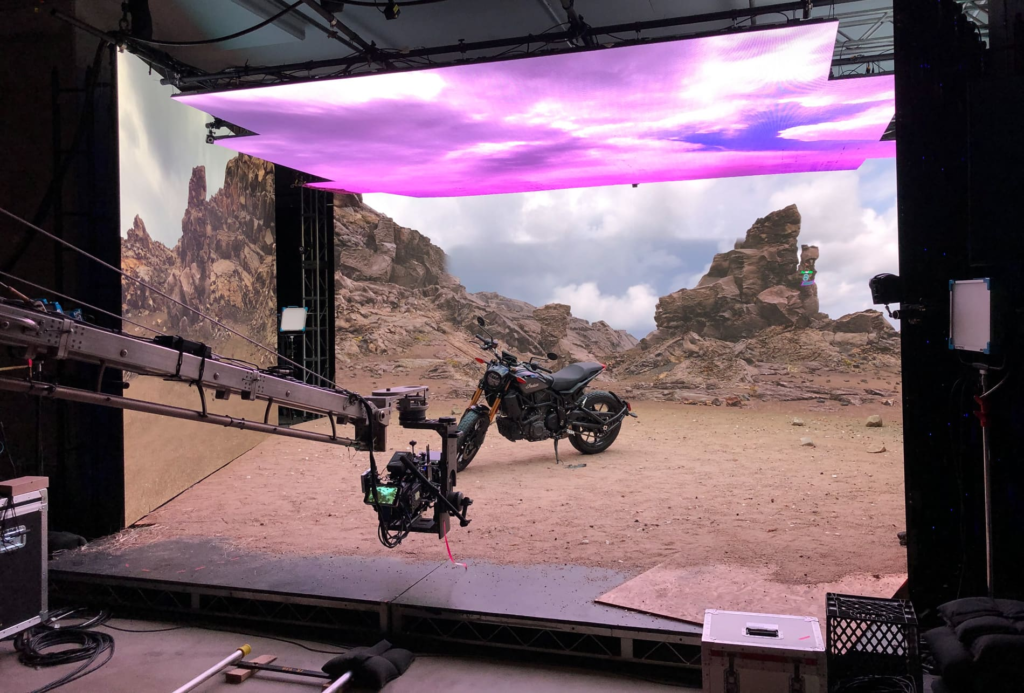
Cost-Efficiency and Sustainability
Virtual production reduces the need for expensive on-location shoots and green-screen setups. It also addresses logistical challenges such as unpredictable weather conditions or location permits, allowing filmmakers to create complex worlds within the confines of a studio. This means productions can save time and money while reducing their carbon footprint, contributing to a more sustainable industry.
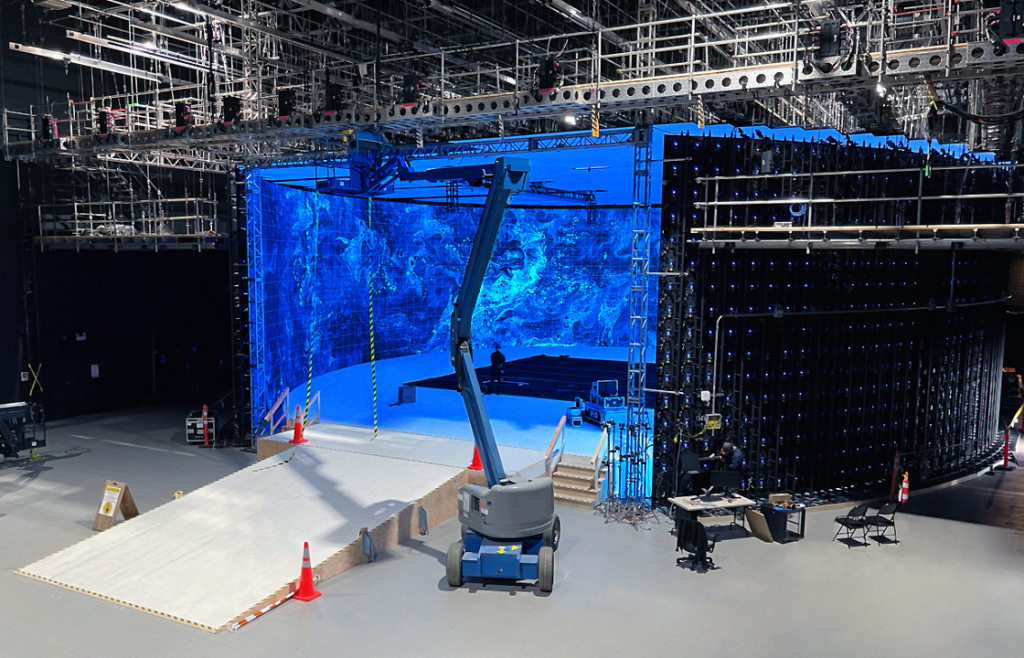
Unlimited Creative Possibilities
The innovative use of LED volume stages provides unparalleled creative freedom. Filmmakers are no longer limited by the physical world—they can conjure virtually any environment, from alien landscapes to historical settings, in stunning detail. The ability to shoot these dynamic environments in real-time enables greater immersive storytelling and opens the door for futuristic, boundary-pushing narratives.

Benefits of Virtual Production and LED Volume Stages in the Entertainment Industry
1. Immersive Environments
The use of high-resolution LED volume stages allows for immersive, interactive backgrounds. These stages can display massive, photorealistic environments that wrap around the set, offering actors and crews a tangible space to interact with. This eliminates the need for green screens, and the actors’ performances are more natural because they can react to actual visual stimuli.
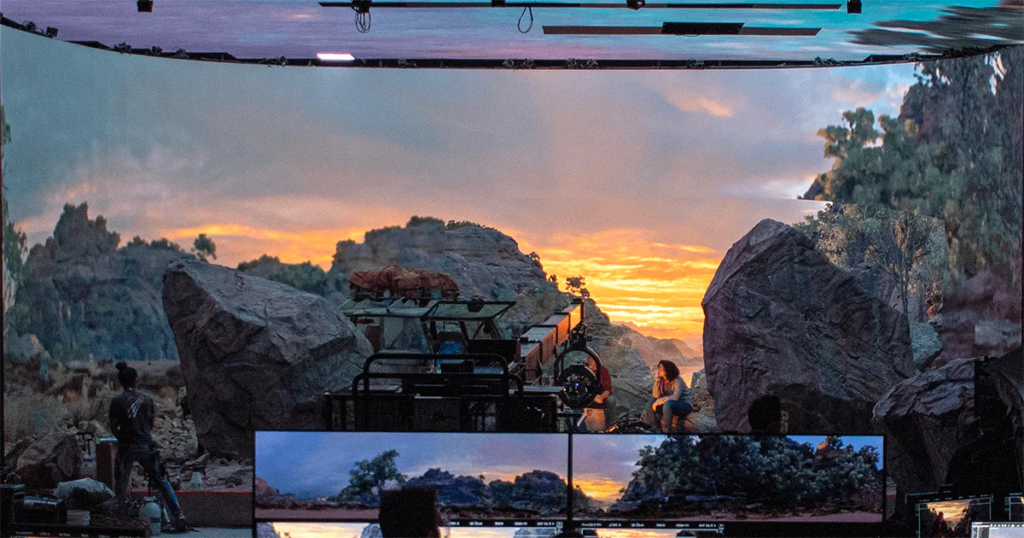
2. Real-Time Adjustments
Virtual production enables real-time iteration. Directors and cinematographers can adjust lighting, camera angles, and even scene layouts on the fly, drastically reducing post-production complexity. This level of flexibility allows for immediate feedback and changes, leading to a more efficient workflow.
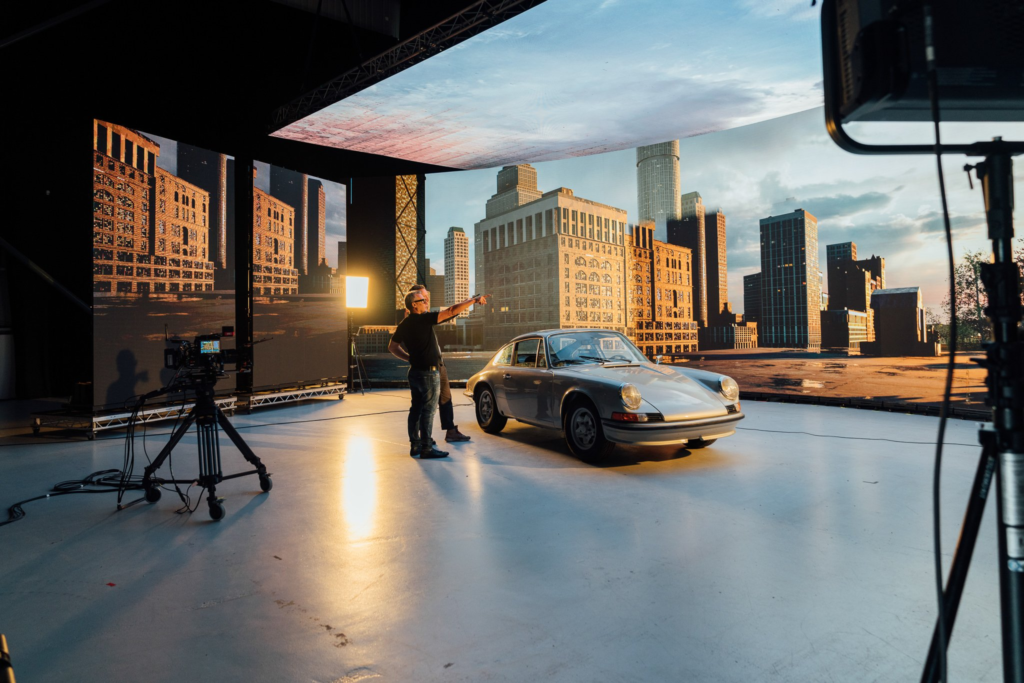
3. Expanded Creativity in Set Design
With virtual production, there are no limitations to set design. Traditional sets require extensive construction and teardown, but LED volumes allow filmmakers to switch locations instantly. From deserts to forests, futuristic cities, or even space stations, the same stage can accommodate a variety of environments, allowing for diverse set designs in a fraction of the time.
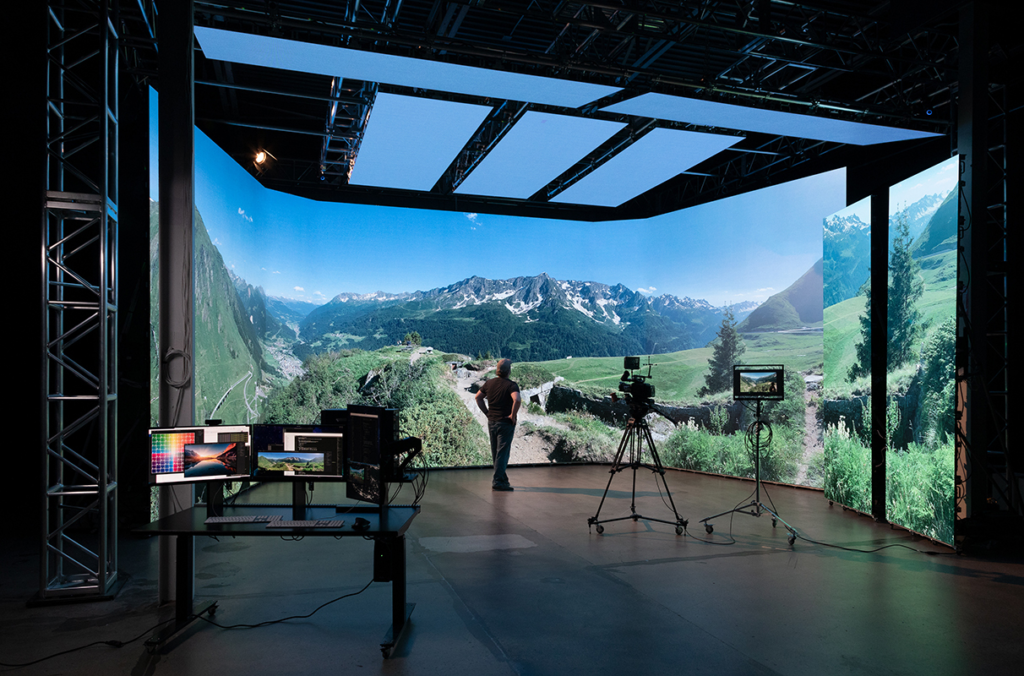
Success Stories: Virtual Production in Action
Several high-profile productions have successfully utilized virtual production and LED volume stages, showcasing the technology’s vast potential. Here are three notable examples of how these solutions are transforming the industry:
1. The Mandalorian (Disney+ Series)
Perhaps the most famous example of virtual production is The Mandalorian, a Disney+ series that uses LED volume stages extensively. Produced by Lucasfilm and Industrial Light & Magic (ILM), The Mandalorian revolutionized filmmaking by integrating real-time rendering into its production process.
Instead of filming against traditional green screens, the team created expansive virtual environments displayed on LED walls surrounding the set. This allowed actors to perform within dynamic, realistic environments, improving their engagement and the visual quality of the show. The use of LED volumes reduced the need for on-location shooting and complicated post-production VFX work, saving time and significantly cutting costs.
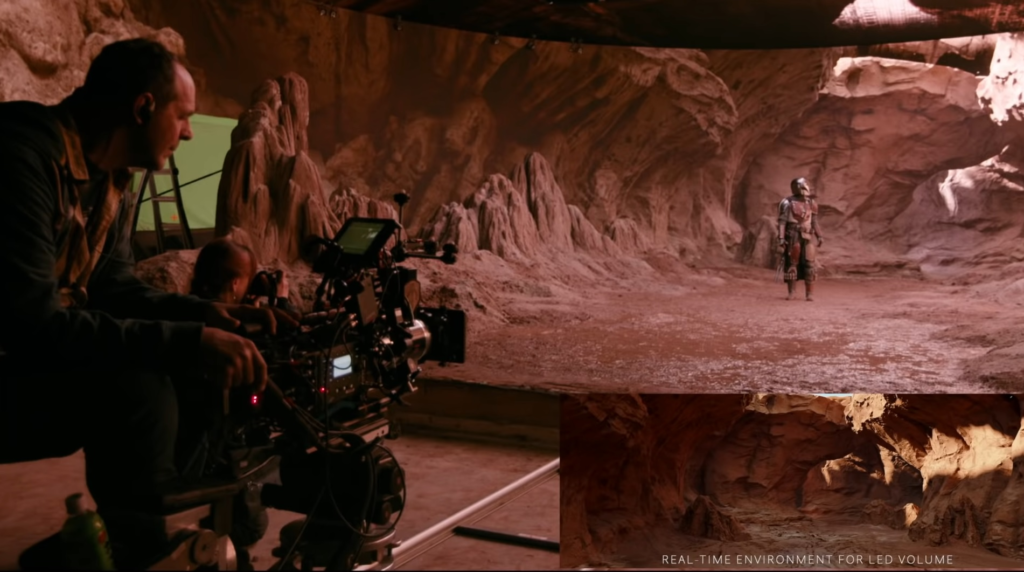
2. The Batman (2022)
The Batman, directed by Matt Reeves, used virtual production techniques to create Gotham City in new and dynamic ways. While the film was shot on physical sets, many of the external environments were built with virtual production techniques, allowing for quick scene changes and greater control over lighting and atmosphere.
By leveraging virtual production, The Batman was able to craft intricate lighting setups with precise control, leading to the film’s iconic noir-inspired visual style. The flexibility provided by LED volumes and real-time environments allowed the film to experiment with new, bold cinematic techniques, demonstrating how virtual production can contribute to innovative storytelling.

3. Ford F-150 Lightning (Commercial)
The use of virtual production isn’t limited to film and TV; it’s also making waves in commercial production. In 2021, Ford’s marketing team leveraged virtual production to launch the all-electric Ford F-150 Lightning truck. The commercial used LED volume stages to create a variety of dynamic environments that allowed the truck to be showcased in multiple settings—without ever leaving the studio.
This technology enabled the crew to produce complex shots in an environmentally controlled setting, eliminating the need for multiple location shoots. The flexibility and speed of virtual production significantly reduced the overall production time while ensuring high-quality, photorealistic results.
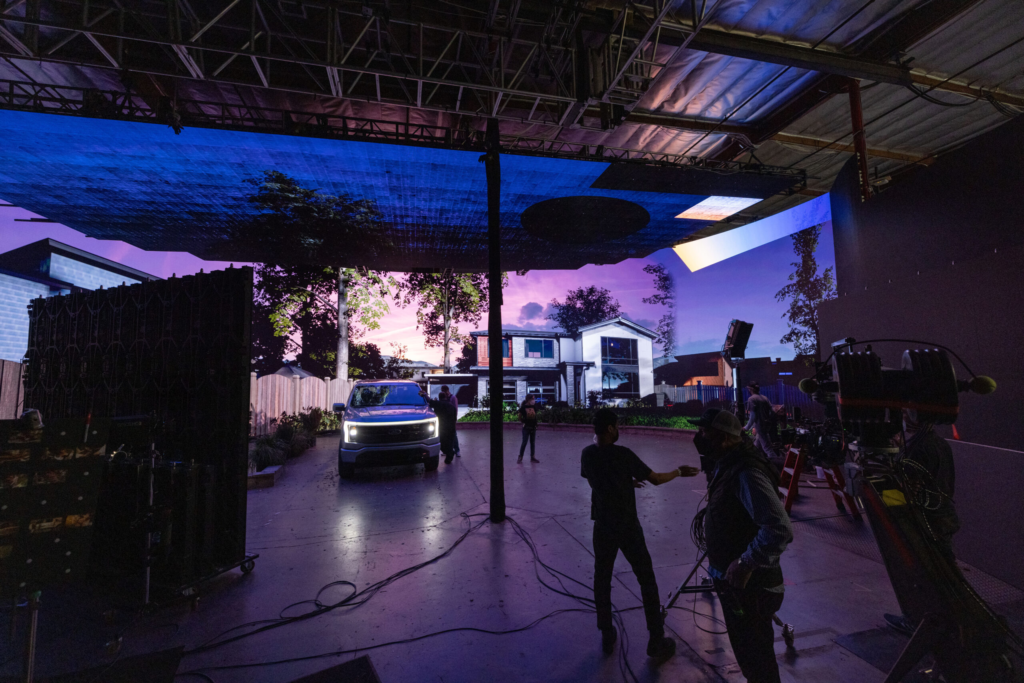
The Future of Virtual Production by 2030
Looking ahead, virtual production and LED volume stages are expected to continue transforming media production, pushing the boundaries of what’s possible in filmmaking. By 2030, these technologies will become even more advanced, offering:
- More Affordable Solutions: As technology improves and becomes more accessible, smaller studios will be able to implement virtual production without the hefty budgets previously required.
- Seamless Integration with AI: Artificial intelligence (AI) will enhance real-time rendering, simulation, and scene adjustments, further improving efficiency and creativity on set.
- Collaborative Global Workflows: With cloud-based tools, international teams will be able to collaborate on virtual production projects seamlessly, working on the same set virtually from across the globe.
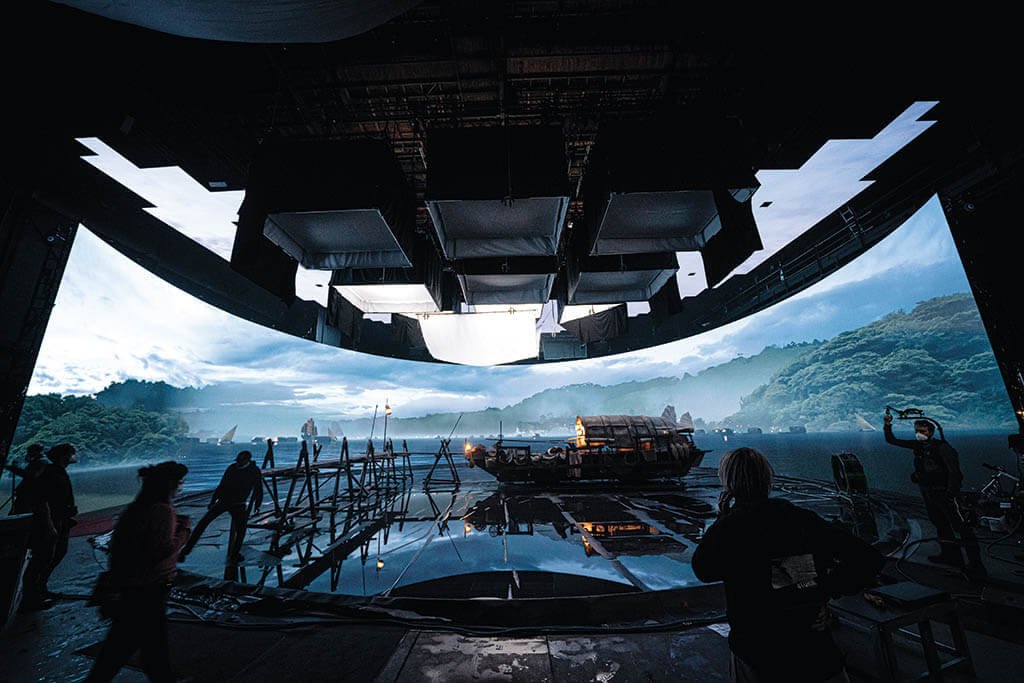
Overall
By 2030, virtual production and LED volume stages will be ubiquitous in the media industry, driving a profound shift in how content is created. With real-time collaboration, cost efficiency, and unlimited creative potential, these technologies offer solutions that transform both small and large-scale productions. From Disney’s The Mandalorian to Ford’s commercials, virtual production is proving to be a game-changer across various sectors.
With years of expertise in this technology, we are here to support your needs. If you’re interested in learning more about similar technologies and how they can be applied, feel free to reach out to our team at www.studioimageworks.com/contact. You can also connect with us via LinkedIn or reach our support team on WhatsApp.

